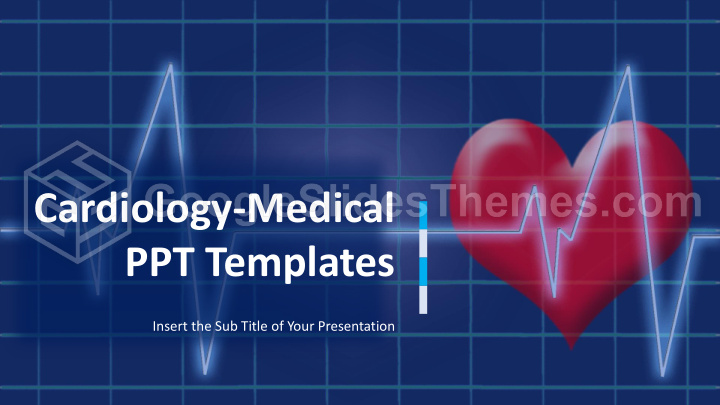



Cardiology-Medical PPT Templates Insert the Sub Title of Your Presentation
Agenda Style 01 Contents Get a modern PowerPoint Presentation that is beautifully designed. I hope and I believe that this Template will your Time. 02 Contents Get a modern PowerPoint Presentation that is beautifully designed. I hope and I believe that this Template will your Time. 03 Contents Get a modern PowerPoint Presentation that is beautifully designed. I hope and I believe that this Template will your Time. 04 Contents Get a modern PowerPoint Presentation that is beautifully designed. I hope and I believe that this Template will your Time.
Section Break Insert the Sub Title of Your Presentation
Our Team Johnson Ontonia Jonas Designation Designation Designation Easy to change colors, Easy to change colors, Easy to change colors, photos and Text. photos and Text. photos and Text. 04
What is cardiology? Cardiology is the study and treatment of disorders of the heart and the blood vessels. A person with heart disease or cardiovascular disease may be referred to a cardiologist. 05
When would I need a cardiologist? ➢ If a person has symptoms of a heart condition, their physician may refer them to a cardiologist. Symptoms that can indicate a heart problem include: ❖ shortness of breath ❖ dizziness ❖ chest pains ❖ changes in heart rate or rhythm ❖ high blood pressure 06
What does cardiology involve? A cardiologist will review a patient’s medical history and carry out a physical examination. They may check the person’s weight, heart, lungs, blood pressure, and blood vessels, and carry out some tests. An interventional cardiologist may carry out procedures such as angioplasties, stenting, valvuloplasties, congenital heart defect corrections, and coronary thrombectomies. 07
Tests for Cardiology Cardiac catheterization A small tube in or near the heart collects data and may help relieve a blockage. Electrocardiogram An exercise test, or (ECG or EKG) stress test This shows the changes of heart This records the electrical activity of rhythm when resting and exercising. the heart. Ambulatory ECG Echocardiogram This provides an ultrasound picture This records heart rhythms while the person carries out exercise or that shows the structure of the their regular activities. heart chambers. Nuclear cardiology Nuclear imaging techniques use radioactive materials to study 08 cardiovascular disorders.
Cardiac electrophysiology ➢ Cardiac electrophysiology is a subspecialty of cardiology. The physician looks at how electric currents inside the heart muscle tissue work, how the current spreads, and what the pattern of the currents mean. ➢ Electrophysiology study (EPS) of the heart: in this test, a catheter is threaded into a vein at the top of the leg. Guided under fluoroscopy, it makes its way to the heart. The catheter measures the electrical signals within the heart. An EPS of the heart can: help to show what is causing symptoms ❖ help decide if a patient needs a pacemaker ❖ help decide the best treatment for patients with ❖ arrhythmia, or abnormal heart rhythm 09
Thank You
Recommend
More recommend